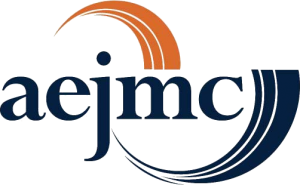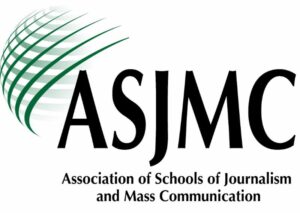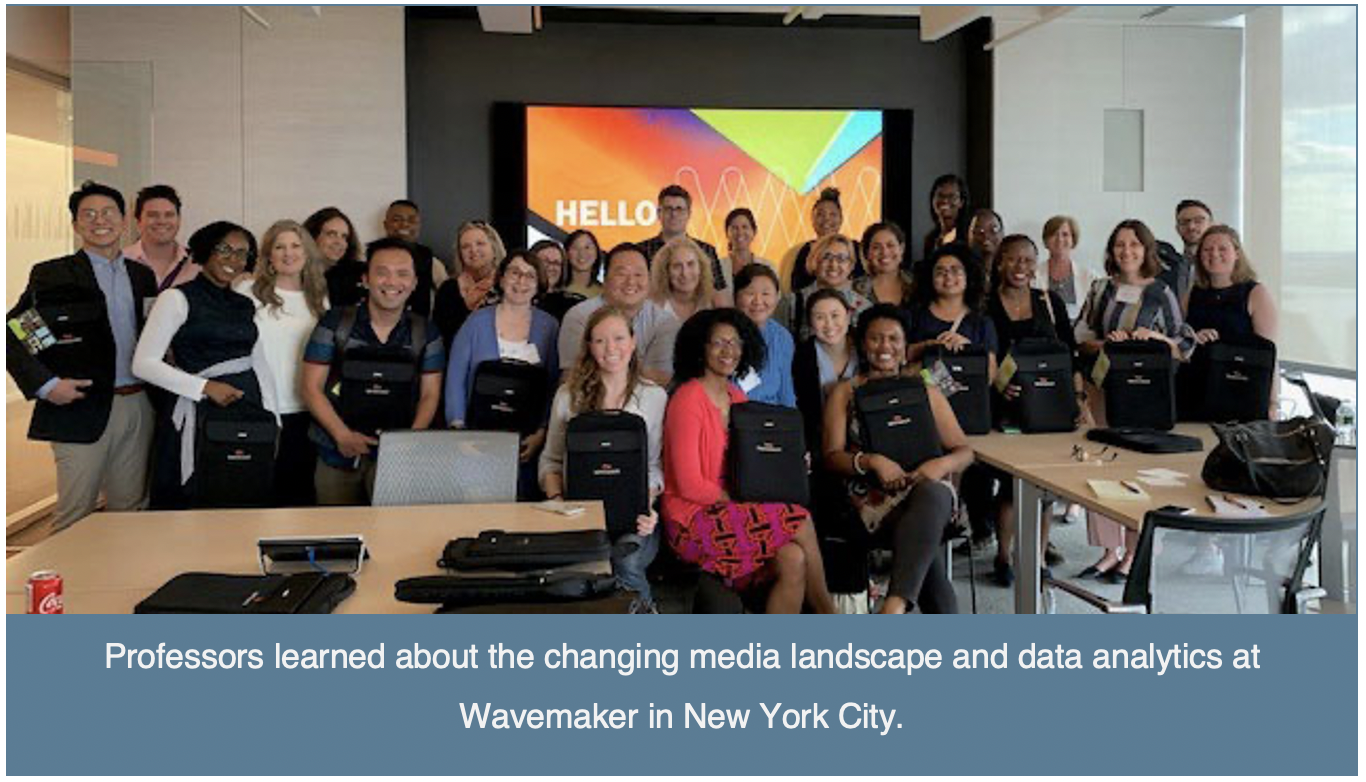AEJMC and ASJMC joint statement supporting the use of the title of “doctor” for those who have earned a terminal degree beyond the master’s level and condemning all forms of misogyny
CONTACT: Tim Vos, Michigan State University, 2020-21 AEJMC President and Gracie Lawson‐Borders, Howard University, 2020-21 ASJMC President and Jerry Crawford, University of Kansas, AEJMC PF&R Committee Chair | December 21, 2020
Association of Schools of Journalism and Mass Communication (ASJMC)
and Association for Education in Journalism and Mass Communication (AEJMC)
“Equality is the soul of liberty; there is, in fact, no liberty without it.” – Frances Wright
We the Boards of Directors of the Association for Education in Journalism and Mass Communication (AEJMC) and the Association of Schools of Journalism and Mass Communication (ASJMC) support the use of the title of “doctor” for those who have earned a terminal degree beyond the master’s level, such as a Ph.D. or Ed.D., and condemn all forms of misogyny. This statement is not merely a rebuke of one individual, who was possibly interested in drawing attention for a news cycle during a challenging time in our current American political theater. Instead, it supports academics in their use of appropriate titles and denounces attempts to belittle the contributions of scholars and teachers who are women.
Women represent a majority of educators in many journalism and mass communications subfields in the academy and in many individual college and university programs. They are champions of free speech and expression. Yet they – like women with terminal degrees in other fields, including Dr. Jill Biden – sometimes face challenges male colleagues do not in getting students, members of the public, and others to refer to them in professional modes of address.
Dr. Jill Biden has devoted her life to being an educator. She has made the all-too-familiar sacrifices women have had to make in maintaining a family and a career. She has been a champion of the American military, women’s issues, and, yes, the importance of life-long learning for many adults looking to reach for the American Dream through education. She does not need her title as First Lady/spouse of the President to define her. Her authenticity and worldview have defined her. Her life, as an educator, mother, stepmother, and grandmother define her. No title. No grandstanding. She simply worked hard, studied, cared about a topic – education – and earned her doctorate in that discipline.
We are not writing to defend one terminal degree over another degree. We understand there are medical doctors, doctors of philosophy, doctors of law, and others. Each are worthy of the rights and privileges bestowed on the degree. For those who refuse to recognize the title for those outside of the medical field, the question is “Why?”
One of the daughters of Dr. Martin Luther King, Jr., Bernice King, commented on her Twitter account, “My father was a non-medical doctor. And his work benefitted humanity greatly. Yours does, too.” Dr. Biden does not need to be defended. Forty-eight years after the failure to pass the Equal Rights Amendment demonstrates why we need to defend the rights of all women to be seen as equals in the workplace and throughout society. No attempts at being humorous or to diminish women should be tolerated.
America has shown the ability to correct and change when the rights of the underrepresented have been trampled. If not now, when?
Journalists know words have power. They have meaning. The messages they convey are able to portray groups as different and not as important as the majority. Women, individuals with disabilities, people of color, LGBTQ people and those within marginalized socio-economic groups know the power of these words. Research has shown, through the years, that media messages help to form how people see and think of others, and themselves.
News organizations and multimedia outlets, as well as those in the academy who are teaching the next generation of communications leaders, should do more than be reactive to destructive words. What is needed is an authentic and steady portrayal of all people and groups as equals in society. It should be acknowledged that The First Amendment allows those to share their voices to ridicule and minimize. It also allows others to rebut that speech with more speech. Moreover, misogynistic, anti-intellectualism and reinforcement of racial and gender hierarchies may create a buzz for a day, or even a week, but those messages should be dispelled by the truth and fact-based messages we see in everyday news coverage.
Journalism can play an important part in this work. Many of the stylebooks and traditions in newsrooms and editorial decisions are outdated and archaic. This needs to be addressed by including new standards – use of non-binary descriptors, race, cultural, and other societal changes – as part of a more inclusive framework.
This is worthy of discussion and it will take partnerships with other stakeholders to make this work.
AEJMC and ASJMC are primed to assist in this important conversation. In accordance to one of the Core Values of AEJMC, which focuses on Caring, “Members act with respect, sensitivity, consideration of others, compassion, and mercy. We try to protect others from abuse and coercion.”
We stand ready.
________________________________________
Association for Education in Journalism and Mass Communication (AEJMC)
The Association for Education in Journalism and Mass Communication (AEJMC) is a nonprofit organization of more than 3,700 educators, students and practitioners from around the globe. Founded in 1912, by Willard Grosvenor Bleyer, the first president (1912-13) of the American Association of Teachers of Journalism, as it was then known, AEJMC is the oldest and largest alliance of journalism and mass communication educators and administrators at the college level. AEJMC’s mission is to promote the highest possible standards for journalism and mass communication education, to encourage the widest possible range of communication research, to encourage the implementation of a multi-cultural society in the classroom and curriculum, and to defend and maintain freedom of communication in an effort to achieve better professional practice, a better informed public, and wider human understanding.
Association of Schools of Journalism and Mass Communication (ASJMC)
ASJMC is a non-profit, educational association composed of some 190 JMC programs at the college level. The majority of the association’s members are in the United States and Canada. ASJMC promotes excellence in journalism and mass communication education. Founded in 1917, ASJMC works to support the purposes of schools of journalism and mass communication in order to achieve the following goals: to foster, encourage and facilitate high standards and effective practices in the process and administration of education for journalism and mass communication in institutions of higher learning; to cooperate with journalism and mass communication organizations in efforts to raise professional standards and promote a public understanding of the role of journalism and mass communication in a democratic society; and to support and participate in the accreditation process of journalism and mass communication units through the Accrediting Council on Education in Journalism and Mass Communications (ACEJMC).
Tips from the AEJMC Teaching Committee
Testing Tolerance Offers Teaching Tips for Classroom Controversies
 By Tracy Everbach
By Tracy Everbach
AEJMC Standing Committee
on Teaching
University of North Texas
and
 By Candi Carter Olson
By Candi Carter Olson
AEJMC Standing Committee
on Teaching
Utah State University
(Article courtesy of AEJMC News, October 2020 issue)
What happens when a student in your class discusses her own sexual assault? How do you moderate a classroom discussion on Confederate statues on campus or in the community? What do you do when a student asks questions that are offensive to other students? How do graduate instructors handle hot‐button student discussions?
We aim to answer these questions and provide a guidebook for instructors in our new book, Testing Tolerance: Addressing Controversial Topics in the Journalism and Mass Communication Classroom, published by Rowman & Littlefield. It’s part of the AEJMC Master Class Series (see p. 19). As former heads of the AEJMC Commission on the Status of Women, we conceived this book from a teaching panel we hosted for several years at the AEJMC annual conference in which we discussed gender, race, sexuality, disability, mental health and other topics. Several of those panelists contributed chapters to our book. Each chapter is designed to tackle specific issues, problems, and discussions instructors and administrators might have to handle.
• Candi Carter Olson writes about teaching media literacy and its importance in addressing race, class, gender, disability, sexuality and other differences. Her chapter walks readers through three exercises, each increasing in the discomfort students may feel, and recommends ways to help students through the exercises.
• Tracy Everbach focuses on how to manage controversy and conflict in the classroom. She has been teaching a class on race and gender in the media for more than a decade and offers answers to the question, “How do we discuss highly emotional personal and political topics in a civil, intellectual manner?”
• Meredith Clark offers strategies to manage the emotional labor that faculty of color face on primarily white campuses. She discusses the invisible labor involved in supporting students and fighting for social justice while completing the everyday work expected of tenure‐track professors.
• Chelsea Reynolds provides advice for navigating the increasing mental health issues that both students and faculty are feeling across college campuses. She leads readers through her proactive approach to mental health in the classroom.
• Rebecca Hains, who has extensive experience as a public intellectual on the internet, gives practical advice for other instructors and writers on coping with and handling online harassment. She focuses on how to protect one’s mental health, reputation and job when attacks come from the digital public sphere.
• Former AEJMC President David Perlmutter offers an administrator’s perspective on public perceptions of university employees. He discusses the balance that administrators must strike between the public and the institution, which can create high levels of stress and strain on university leaders.
• Marquita Smith and María Len‐Ríos provide practical advice on engaging students by flipping the classroom and by using the “difficult dialogues” framework to address critical examinations of race, gender, class, sexuality and other sensitive topics.
• Steve Fox gives tips on how to tamp down the classroom and student media “bro culture” that permeates sports journalism and outlines his advocacy for women students and sports journalists.
• Meg Heckman addresses pressures on advisors regarding campus sexual abuse and mandatory reporting requirements. Instructors are being forced to reveal information students give them in confidence, and she offers specific advice and resources for advisors.
• Three leaders from the Native American Journalists Association (NAJA) discuss approaches to teaching and reporting on Indian Country. Victoria LaPoe, Lenzy Krehbiel‐Burton, and Rebecca Landsberry outline how to accurately portray tribal communities, with the goal of reducing stereotyping and erasures of Native identities and perspectives.
• Laura Castañeda takes on “mansplaining,” which is the act of over‐explaining something to a woman in which she is an expert. She offers class activities to draw attention to and prevent the phenomenon.
• Khadija Ejaz discusses the ways that identity, student perceptions, and instructor authority collide in university classrooms for new graduate students teaching courses. She shares personal reflections and those from other graduate students on teaching difficult topics for the first time, especially as a woman and a racial or ethnic minority.
• Nathian Rodriguez focuses on ways to use mediated texts of LGBTQ+ representations to foster discussions of intersectionality in classrooms. He suggests various pop culture texts, including videos, podcasts, streaming shows, and music, through which to do so.
• Paromita Pain offers ways to create a classroom environment that supports and encourages intersectional conversations. By breaking it down, she makes intersectionality approachable and usable by both students and professors.
Finally, we provide resources for teaching tolerance, including books, videos, films, academic journal articles, popular articles, and interactive online projects, and offer tips and tricks for making your classroom a safe and challenging space for approaching tough topics.
For details on how to order Testing Tolerance and other books in the AEJMC Master Class Series, and receive a 30% discount, please visit: http://www.aejmc.com/home/resources/master-class-publications/
AEF’s Visiting Professor Program
Apply now to the AEF’s Visiting Professor Program!
The AEF invites you to apply to the Visiting Professor Program. The VPP immerses professors into the world of marketing and advertising, to inform your research and teaching, while extending your academic network within one week. Because of Covid-19, all sessions will be done via virtually.
Find out more by clicking here.
Qualified professors will participate in the VPP and learn from executives at Ogilvy, McCann, IBM and others. So, what are you waiting for? Read more about the VPP and apply!
Application deadline is February 15, 2021!
Questions?
Sharon Hudson, VP, Program Manager
AEF
646-708-8114
AEJMC Council of Affiliates Taskforce
Serving the AEJMC Council of Affiliates Taskforce
For the 2021 – 2022 term
Paul Voakes (Co-chair), former President, AEJMC
University of Colorado Boulder
Nancy Green (Co-chair), Chair, Council of Affiliates
America’s Newspapers
Tom Rosenstiel
American Press Institute
P.J. Browning
Southern Newspaper Publishers Association
Karla Gower
The Plank Center for Leadership in Public Relations
Lucas Graves
University of Wisconsin-Madison
Genelle Belmas
The University of Kansas
IDL Fellows
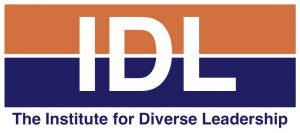
Universities listed are at the time of graduation from the IDL program.
IDL Jennifer McGill Fellows 2024-25
- Lucina Austin, University of North Carolina at Chapel Hill
- Dhiman Chattopadhyay, Shippensburg University
- Meredith D. Clark, University of North Carolina at Chapel Hill
- Marlene Neill, Baylor University
- Juliet Pinto, Pennsylvania State University
- Erica Salkin, Whitworth University
- Adina Schneeweis, Oakland University
- Amy Simons, University of Missouri
IDL Jennifer McGill Fellows 2023-24
- MASUDUL BISWAS, Loyola University Maryland
- BILL CASSIDY, Northern Illinois University
- DEBORAH CHUNG, University of Kentucky
- SYDNEY DILLARD, DePaul University
- NATHANIEL FREDERICK II, Winthrop University
- YOUNGAH LEE, Ball State University
- REGINA LUTTRELL, Syracuse University
- NATHIAN SHAE RODRIGUEZ, San Diego State University
IDL Jennifer McGill Fellows 2022-23
- JAN LAUREN BOYLES, Iowa State University
- KATIE FOSS, Middle Tennessee State University
- HILARY FUSSELL SISCO, Quinnipiac University
- CHERYL ANN LAMBERT, Kent State University
- HOLLY OVERTON, Penn State University
- JESSICA RETIS, University of Arizona
- JAE-HWA SHIN, University of Southern Mississippi
- GABRIEL B. TAIT, Ball State University
IDL Fellows 2020-21
- Mia Long Anderson, Azusa Pacific University
- David Brown, Temple University
- Tamara Zellars Buck, Southeast Missouri State University
- Moonhee Cho, University of Tennessee Knoxville
- Celeste Gonzalez de Bustamante, University of Arizona
- Miao Guo, Ball State University
- Ammina Kothari, Rochester Institute
- Gerry Lanosga, Indiana University
- Ingrid Sturgis, Howard University
- Bruno Takahashi, Michigan State University
IDL Fellows 2019-20
- Adedayo (“Dayo”) Abah, Washington and Lee University
- Saleem Alhabash, Michigan State University
- Vanessa Bravo, Elon University
- Rockell Brown Burton, Texas Southern University
- Maria De Moya, DePaul University
- Felicia McGhee, University of Tennessee at Chattanooga
- Suman Mishra, Southern Illinois University Edwardsville
- Jennifer Potter, Towson University
- Gi Woong Yun, University of Nevada, Reno
IDL Fellows 2018-19
- Margaretha Geertsema-Sligh, Butler University
- Herman Howard, Angelo State University
- Jeannine E. Relly, University of Arizona
- Yong Volz, University of Missouri
- Mia Moody-Ramirez, Baylor University
- Vera Walker Hawkins, Texas Southern University
- Uche Onyebadi, Texas Christian University
- Jennifer Vardeman, University of Houston
- Weiwu Zhang, Texas Tech University
IDL Fellows 2016-17
- Linda Aldoory, University of Maryland
- Laura Castaneda, University of Southern California
- Jerry Crawford, University of Kansas
- Calvin Hall, North Carolina Central University
- Karie Hollerbach, Southeast Missouri State University
- Maria Len-Rios, University of Georgia
- Herb Lowe, University of Florida
- Emily Metzgar, Indiana University
IDL Fellows 2015-16
- Carolyn Bronstein, DePaul University
- Jean Grow, Marquette University
- Susan Keith, Rutgers University
- Kathleen McElroy, Oklahoma State University
- Gwyneth Mellinger, Xavier University
- Donica Mensing, University of Nevada Reno
- Marquita Smith, John Brown University
- Alice Tait, Central Michigan University
Research You Can Use
 Research You Can Use highlights research from AEJMC refereed journals that may interest journalists and others for use in continuing education. Articles are contributed by the editors of AEJMC refereed journals.
Research You Can Use highlights research from AEJMC refereed journals that may interest journalists and others for use in continuing education. Articles are contributed by the editors of AEJMC refereed journals.
Journal of Advertising Education
The Journal of Advertising Education is devoted to research and commentary on instruction, curriculum and leadership in advertising education.
Journalism & Mass Communication Monographs
Journalism & Mass Communication Monographs presents in-depth research on specific topics within journalism and mass communication on subjects ranging from journalism history and personalities to international mass communication.
- Monograph Explores Cultural Politics of Colorism in India
- New study shows how journalism ethics developed
Journal of Public Relations Research
Journal of Public Relations Research provides scholarly criticism of public relations practice, and helps to develop the history, ethics, and philosophy of public relations.
Newspaper Research Journal
Newspaper Research Journal comprehensively answers questions about U.S. newspaper performance and related topics of interest, ranging from balance and fairness to the use of computer analysis in newspaper reporting.
- Study Shows the Rise in Use of Online Forums
- Study ranks blogs’ use of traditional media as sources in 2006 election
- The larger a newspaper’s local population, the broader its online market
- Marijuana coverage framed differently in editorials, op-eds
- President had limited framing power in stem cell debate
- Meeting coverage changes with newsroom cutbacks
- Citizen Journalism Sites Complement Newspapers
- Study: Values, Ethics of Sports Reporters Vary by Beat
Journal of Communication Inquiry
The Journal of Communication Inquiry (JCI) focuses on research that examines media and communication from a critical, cultural, and historical perspective.
Journalism & Mass Communication Educator
Journalism & Mass Communication Educator focuses on learning and teaching, curriculum, educational leadership, and related exploration of higher education within a context of journalism and mass communication.
- No Evidence that Accredited Journalism Schools are Better than Unaccredited Ones
- Nontraditional Online News Media Seek Employees with Adaptive Expertise
Journalism & Mass Communication Quarterly
Journalism and Mass Communication Quarterly focuses on research in journalism and mass communication, developments in theory and methodology of communication, international communication, journalism history, and social and legal problems.
- News Paywalls – Should They Cost Less in Poorer Countries?
- Should News Organizations Be in the “Reunion” Business?
- The push for paywalls mischaracterizes the nature of online newspaper readership
- Dimensions of News Media Brand Personality
- Users say participation in news sites’ online forums helps them understand their communities better
- Climate Change and the Belief Gap Hypothesis
- Citizens’ Local Political Knowledge Threatened By New Media
- Viewing Media Coverage of Terrorism Related to Posttraumatic Stress Reactions; Youth Particularly Susceptible
- Science and media disconnect? Maybe not, says a new study
Mass Communication and Society
Mass Communication and Society publishes articles from a wide variety of perspectives and approaches that advance mass communication theory, especially at the societal or macrosocial level.
AEJMC Rescinds 2019 Presidential Award
August 31, 2020
The following statement has been issued by the Board of Directors of the Association for Education in Journalism and Mass Communication (AEJMC).
Recently published information resulting from a journalist’s FOIA request suggests that AEJMC’s 2019 Presidential Award designee Will Norton engaged in communication, including responding to highly questionable communication from a third party, that does not align with AEJMC’s Code of Ethics, particularly two core values:
- Justice: AEJMC members strive for fairness, impartiality, and distributive justice in our relationships with peers, students, and other stakeholders. We celebrate and promote diversity.”
- Caring: AEJMC members act with respect, sensitivity, consideration of others, compassion, and mercy. We try to protect others from abuse and coercion.
In a duly called meeting, a quorum of the AEJMC Board of Directors met with some members of the Association of Schools of Journalism and Mass Communication (ASJMC) Board and, after discussion, the AEJMC board voted to rescind the award.
The AEJMC Code of Ethics is available here: http://www.aejmc.com/home/2011/03/ethics-preamble/
Ways to Get Involved in AEJMC
You are part of a special community!
Make the most of your AEJMC membership using this helpful information.
Presenting research
· Proposal a panel to a division or interest group (deadline is Sept. 15th)
· Submit an individual or coauthored paper to the refereed paper competition (deadline is April 1st). If accepted, you will present your paper alongside others with similar topics or present in a poster-format at the scholar-to-scholar session.
Attending the conference
· Refereed research paper sessions (traditional, scholar-to-scholar, high density)
· Panel sessions
· Spotlight sessions
· The exhibit hall
· The keynote and opening reception
· Off-site trips
· Socials
· Meetings
Serving AEJMC for the conference
· Reviewing papers for a division or interest group (month of April)
· Serving as a discussant at the conference (usually one per session, 4-8 papers)
· Moderating a session at the conference
Serving in longer-term positions
· As an officer in a division or interest group (usually one year per role)
· In an elected position
Tips from the AEJMC Teaching Committee
Media Literacy as a Way of Living
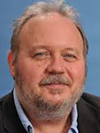 By Ralph Beliveau
By Ralph Beliveau
AEJMC Standing Committee
on Teaching
University of Oklahoma
(Article courtesy of AEJMC News, July 2020 issue)
We are experiencing difficult challenges as teachers and educators. The pandemic undermines the structure of higher education and demands instantaneous changes to our practices and the time and space relationships of teaching and learning. Secondly, the social tensions connected to race and justice have called on us to rethink how students, staff and colleagues of color have different experiences than white people who have positions of privilege, regardless of any intersectional configuration we may have. Finally, the positions of knowledge, information and media may create less clarity and increase confusion in our culture.
As an advocate for the transformational power of media literacy, I find that the work that I have done with students, colleagues and fellow media literacy scholars is ongoing, immediately vital, and in need of constant care and attention. Media literacy is not something achieved in the rear view mirror. In fact, McLuhan suggested that the rear view mirror is not the best way to move into the future: “When faced with a totally new situation, we tend always to attach ourselves to the objects, to the flavor of the most recent past. We look at the present through a rear‐view mirror. We march backwards into the future.” (McLuhan, Medium is the Massage, 1967).
This will not serve us well as a strategy to think about our present challenges, any more than a completely textual literacy, or a televisual literacy, is a good enough accomplishment (in the rear‐view mirror) to negotiate the present challenges in all their digital splendor.
Media literacy offers a corrective to the distortions that the past imposes on the present. But it only works through a constant state of interrogation and re‐interrogation. The questions we ask (and re‐ask) can be thought of in different ways. Typically, media literacy at any moment adopts a clear‐eyed posture and asks of a media experience:
• Who created this message?
• Which techniques are used to attract attention?
• How might different people interpret this message?
• Which values, lifestyles and points of view are represented… or are absent?
• Why is this message being sent?
We may have asked these questions in the past, about a particular mediated moment, but those answers may not be enough to work in the present. More important, asking these questions needs to be a habit, a way of interacting with the media world of the present moment to gain answers to the questions we face in these recent challenges.
This set of questions represents the deep dive approach. A different approach that comes out of an emphasis on information literacy is less invested in the deep dive, taking a faster strategy that seeks to verify the validity of what we might see or hear —especially before we go about repeating it (reposting, memeing, retweeting, etc.), and even before we consider how we feel about it. This quicker approach suggests you don’t think too hard about the claims you see and hear till you determine its value — is it true, or misinformation, or disinformation? This approach, “The Four Moves,” suggests:
• Check for previous work. (See if someone else has already fact‐checked the claim or provided a synthesis of research.)
• Go upstream to the source (…of the claim. Most web content is not original.).
• Read laterally. (Read what other people say about the source [publication, author, etc.]. The truth is in the network.)
• Circle back. (If you get lost, or hit dead ends, or find yourself going down an increasingly confusing rabbit hole, back up and start over knowing what you know now. You’re likely to take a more informed path with different search terms and better decisions.)
(For more, see Mike Caufield’s free pub Web Literacy for Student fact Checkers, https://webliteracy.pressbooks.com/front‐matter/web‐strategies‐for‐student‐fact‐checkers/)
The result is a digitally oriented fact‐checking process that uses the tools available to us individually and collectively to get to that clear‐eyed perspective before we have invested too much time in it.
Either approach brings to our attention and the attention of our students how what we are learning is fundamentally tied to how we are learning. And, again, the process is not once‐and‐done.
For example, one thing we have learned in the recent educational environment is that online is different from face‐2‐face teaching and learning. The change sets up an interesting opportunity for either approach to the higher education experience. How does a program like Zoom, or our Learning Management System design, or our choices about synchronous vs. asynchronous change the teaching and learning experience? And what would students learn from considering such questions?
These are medium choices, and we should subject them to the same kind of critical interrogation that we would use to become, say, media literate about Zoom, or Canvas, etc. Our students are certainly aware, but do they consciously know and talk about that awareness? For example, how does it affect learning to be facing the “Brady Bunch” grid for a class that includes an image of you, the viewer? You can see what you look like while you are trying to learn. What effect is that having?
Now, back to the current challenges. How have we addressed the social world differently in an institution of shared isolation? In the transition, the digital world was full of suggestions from teachers, technologists and even students; don’t do synchronous, don’t make students turn their cameras on, dress professionally for Zoom appearances, don’t use weird backgrounds (which I completely ignore), try not to appear like you are being held hostage, or asleep, or more interested in your cat than you should, etc. But perhaps at some point we can subject the characteristics of the new environment to both types of interrogation suggested above. Learning that understands the health and social consequences of our actions, that takes the deep dive, may prepare us to recognize good and bad scientific or statistical information, perhaps even save lives. Even going through four moves would indicate that sources that blamed 5G networks for Corona virus were sketchy. But then we can interrogate the conspiracy theories, both to see their fact‐free‐ness, and to perhaps consider who gains power when another group feels lost, confused and disillusioned. And what are the characteristics of the social, digital and traditional media that spread the confusion?
We face a different challenge in our classrooms when it comes to racial justice. The murder of George Floyd was the immediate cause for a broad‐based protest movement. As we watch the coverage – mixed between local, national and international mainstream media, as well as live streams on social media of protest activities and police responses – our immediate reactions need to be informed by the history (the rear‐view, if you will). I am finishing these thoughts on the 99th anniversary of the 1921 Tulsa Race Massacre. Our digital environment gives us access to the history that includes that moment, as well as the numerous other incidents of violence against people of color, at a moment where evidence in the digital world is having a new and profound influence. Tulsa 1921 was brushed over and ignored for decades (see https://www.vox.com/identities/2020/5/31/21276084/tulsa‐race‐massacre‐black‐wall‐street‐protests‐george‐floyd, and read Rilla Askew’s novel Fire In Beulah [2001]). We ought to talk to our students about what these videos — this evidence — means, so that mobile phone, body cam, and other witness footage is understood for all of its ethical complication, and its meaning to complex issues of justice.
The world of video evidence is a new and pervasive reality. We need to work hard as educators in real and virtual classrooms to give students the tools to understand the complexities of this environment. Using media literacy practices and habits to empower our students is our calling, because otherwise the advances in technology, the complexity of media economics and the churn of media regulation will be foreign and alienating to them. On the other hand, having different sets of skills to critically interrogate whatever is ahead for us and them may get us in the habit of realizing that media literacy is not a fait accompli but a discipline that we ought to instill in ourselves and our students.
